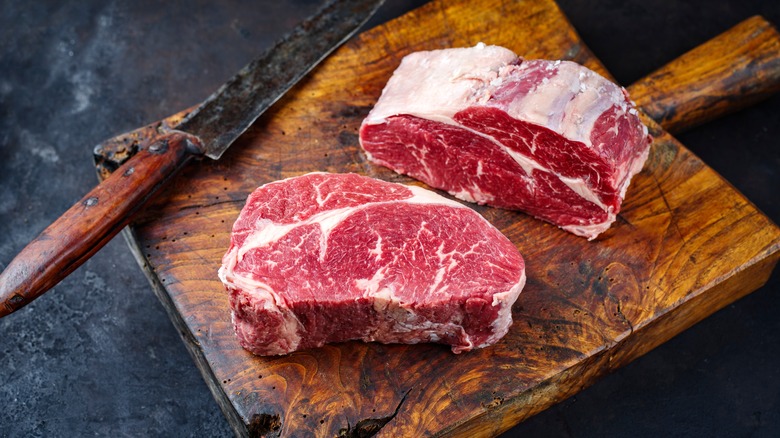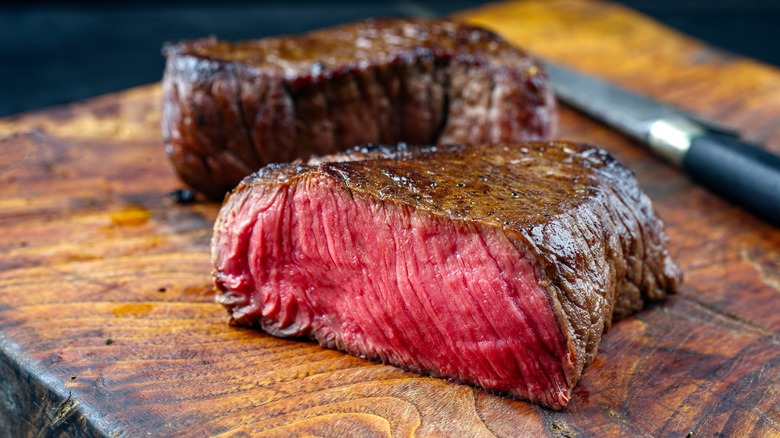The Telltale Signs Your Dry Aged Steak Has Gone Bad
Dry-aging beef is an intersection of art and science. This ancient food prep technique intensifies the rich, beefy flavors of the meat and makes it more tender at all once. To pull it off, a raw steak is stored in a cold, well-ventilated space and left to dry out for a set amount of time, whether it be weeks or months. Seems pretty straightforward... right? Kind of, but if you're not careful, you might end up with a rotten slab of meat instead of a delicious delicacy.
Dry-aging is a scientific process, so the variables need to be controlled and monitored by a knowing eye. As the steak ages in its cool environment, its color will darken from bright to dark red, or nearly black or purple. The meat will likely shrink in size, and the surface might even sport a thin layer of mold.
These changes are all normal, even the mold growth — if you cut off the fuzzy layer and the meat is still red and lookin' good beneath, no worries. But a green hue on the steak is a bad sign, and so is any sliminess. If your steak demonstrates either of these attributes, it probably isn't safe to eat. Plus, the good old sniff test is a reliable method for detecting spoilage. If your steak smells rank and rotten, not pleasantly bold, sharp, and funky, you'll need to toss it out and restart from square one.
More tips to successfully dry-age beef
Dry-aging is not to be confused with wet-aging, but both methods make the meat more tender. In the case of dry-aging, letting the meat sit over 11 to 30 days allows enzymes in the muscle to break down the stiff proteins and tissues, so that the steak physically relaxes. As the moisture evaporates and the meat dries out, the flavor concentrates, building funkiness and depth. This results in a softer, more tender cut with a deeper umami flavor.
Beyond choosing the best cuts of steak you can find, adequate space is an essential "ingredient" in dry-aged steak. Professional butchers usually hang steaks on hooks so air can touch the meat on all sides, and age them in environments with around 85% humidity. Home cooks may not have this caliber of equipment, but a dedicated mini fridge with a wire rack can be a terrific substitute. You could use your regular fridge, but since you open and close the door so often, the steak might suffer from fluctuations in temperature and humidity. Set the fridge to 34 to 40 degrees Fahrenheit.
Two weeks is a good start for at-home dry-aging, but some steakhouses age their beef for up to 28 days. It depends on how intense you want those aged qualities to be. Just keep in mind that the aged flavor might dominate the meat's natural taste over time — and keep an eye on your steak to make sure it doesn't spoil.

